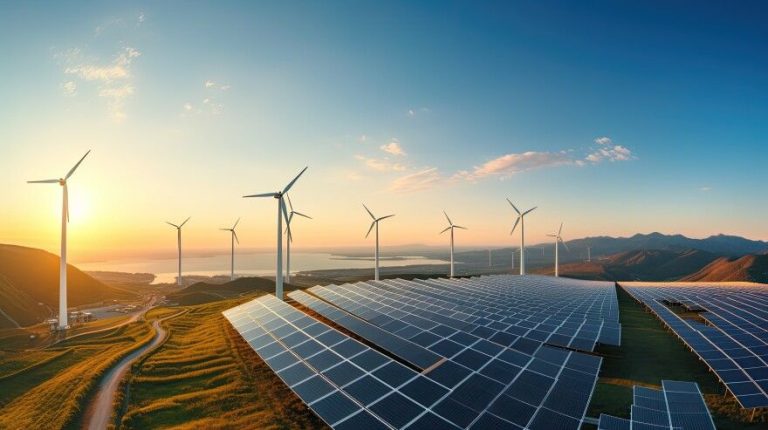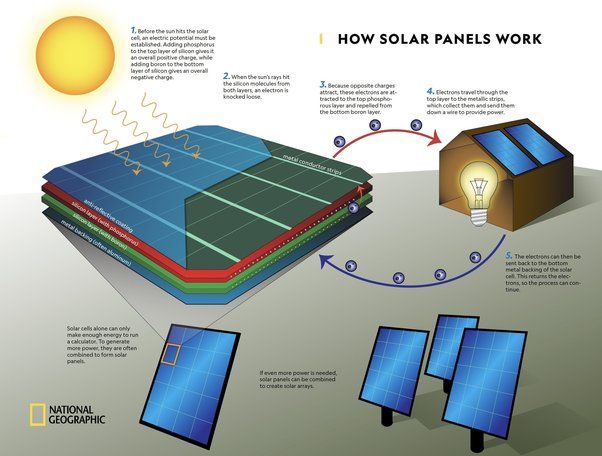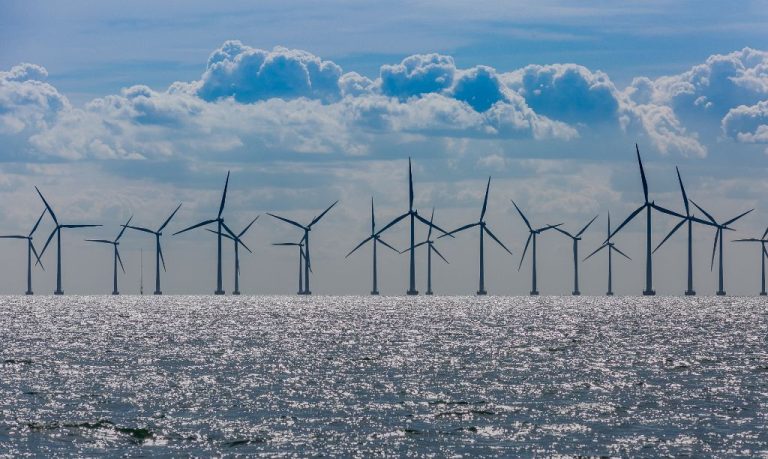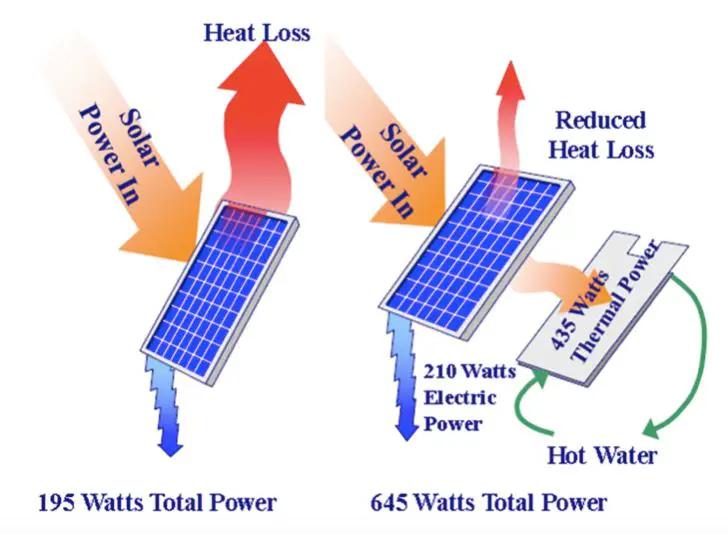How Do Plants Harvest Solar Energy?
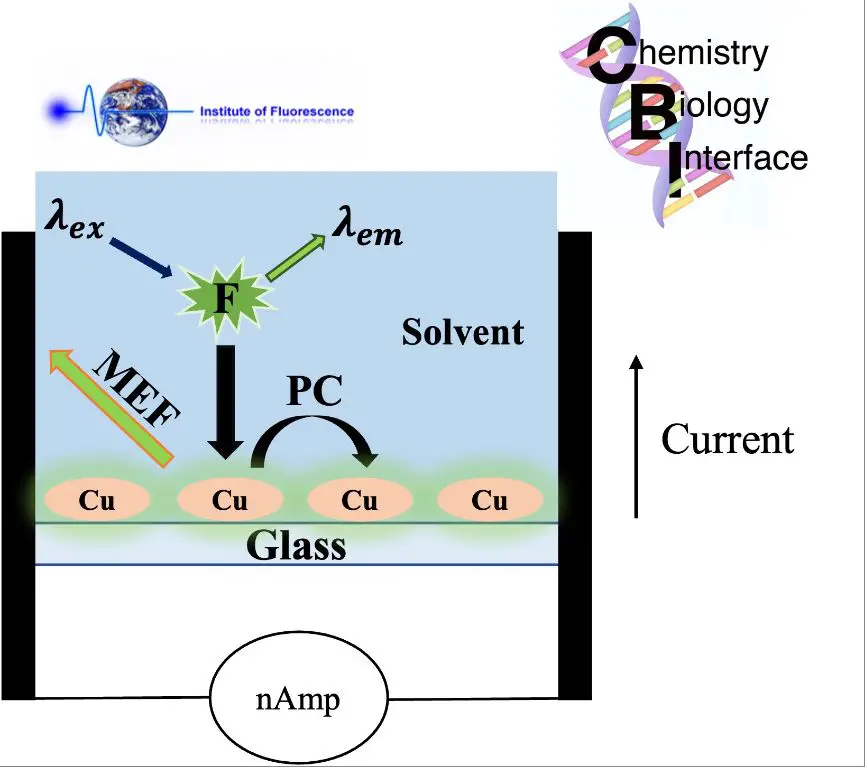
Photosynthesis is the process through which plants, algae and some bacteria convert sunlight into chemical energy. During photosynthesis, plants take in carbon dioxide (CO2) and water (H2O) from the air and soil. Using the energy from the sun, the plants convert these into carbohydrates like sugars and oxygen (O2). The carbohydrates act as food for the plants and the oxygen is released into the atmosphere. This oxygen is what humans and animals need for respiration.
Photosynthesis is extremely important for life on Earth. As the Why Study Photosynthesis article explains, photosynthesis provides food for plants and indirectly for animals that depend on plants. It replenishes oxygen levels in the atmosphere and removes carbon dioxide. Photosynthesis also provides renewable biofuels and useful products like timber, cotton, and rubber. By understanding the photosynthesis process, scientists can work to improve agricultural yields and develop better methods for utilizing solar energy.
The basic overview of photosynthesis involves two stages: the light-dependent reactions and the Calvin cycle reactions. In the light-dependent reactions, light energy is absorbed by chlorophyll and used to produce ATP and NADPH. In the Calvin cycle, CO2 from the air fixes onto a 5-carbon sugar, using the ATP and NADPH to eventually produce glucose. The detail of these reactions and other forms of photosynthesis will be explored throughout this article.
Light-dependent reactions
The light-dependent reactions occur in the thylakoid membranes of the chloroplasts and convert solar energy into chemical energy in the form of ATP and NADPH (Bio.libretexts.org, 2023). This process begins when light energy is absorbed by photosynthetic pigments like chlorophyll and carotenoids. The energy from the photons of light excite electrons in these pigment molecules, boosting them to a higher energy level. This generates high-energy electrons that are then transported down an electron transport chain, similar to what occurs in cellular respiration. As the electrons move down the electron transport chain, they lose energy. This energy fuels the pumping of hydrogen ions from the stroma into the thylakoid space, generating an electrochemical gradient. ATP synthase channels the hydrogen ions back into the stroma, and their flow provides energy to convert ADP into ATP. Meanwhile, electrons at the end of the electron transport chain combine with the hydrogen ions and NADP+ to produce NADPH (Raider.pressbooks.pub, 2023).
In addition to producing ATP and NADPH, the light-dependent reactions also split water molecules in the process of photolysis. This produces oxygen as a byproduct that is released into the atmosphere. Photolysis occurs when light energy excites electrons in the oxygen-evolving complex on Photosystem II. The energized electrons from PSII replace electrons lost from chlorophyll reaction centers. This leaves positively charged holes that facilitate the splitting of water. The electrons derived from water combine with NADP+ and H+ to form NADPH, while the oxygen atoms combine to produce O2 gas (Bio.libretexts.org, 2023).
The Calvin cycle
The Calvin cycle, also known as the dark reactions, takes place in the stroma of the chloroplast. It utilizes the NADPH and ATP generated during the light reactions to fix carbon dioxide into G3P (glyceraldehyde 3-phosphate), a simple carbohydrate. There are three main stages:
1. Carbon fixation: The enzyme RuBisCO catalyzes the carboxylation of ribulose-1,5-bisphosphate (RuBP), a 5-carbon compound, by carbon dioxide, forming two molecules of 3-phosphoglycerate (3-PGA), a 3-carbon compound.
2. Reduction: The 3-PGA is then reduced using the ATP and NADPH produced in the light reactions. This forms glyceraldehyde 3-phosphate (G3P), another 3-carbon compound.
3. Regeneration of RuBP: Most of the G3P proceeds through several reactions that regenerate RuBP so the cycle can continue. The G3P is used to make more RuBP.
One molecule of G3P leaves the cycle per turn and is used to synthesize glucose and other carbohydrates. The Calvin cycle thus results in fixation of carbon from carbon dioxide into carbohydrates using the ATP and NADPH from the light reactions (https://en.wikipedia.org/wiki/Calvin_cycle).
Photorespiration
Photorespiration is a process that competes with photosynthesis by oxidizing rubisco and reducing CO2 fixation and photosynthetic efficiency. While photosynthesis fixes CO2 into sugars, photorespiration works in the opposite direction, releasing previously fixed CO2 from the Calvin cycle. Photorespiration serves as a recycling system, recovering some of the CO2 that would otherwise be lost during the oxygenation reactions of rubisco. However, this recycling comes at a cost, as photorespiration can reduce net photosynthesis by 20-50%.
Photorespiration is much more prominent in C3 plants compared to C4 and CAM plants. C3 plants use only the Calvin cycle for fixing CO2, making them more vulnerable to rubisco oxygenation and photorespiration. C4 and CAM plants have adaptations that help concentrate CO2 around rubisco, favoring carboxylation over oxygenation. As a result, C4 and CAM plants exhibit reduced photorespiratory losses compared to C3 plants (http://ib.bioninja.com.au/higher-level/topic-8-metabolism-cell/untitled-2/c3-c4-and-cam-plants.html).
C4 Photosynthesis
C4 photosynthesis is a variation of the more common C3 photosynthesis pathway. C4 plants have developed a mechanism to minimize photorespiration, the biochemical pathway that occurs when the enzymes that capture CO2 begin to accept O2 instead. This adaptation allows C4 plants to photosynthesize more efficiently in hot, dry environments.
The key difference between C3 and C4 plants lies in the first product of photosynthesis. In C3 plants, the first stable product is a three-carbon compound called 3-phosphoglycerate (3PGA). In C4 plants, the first product is a four-carbon compound called oxaloacetate. This gives C4 plants their name.
C4 plants use an enzyme called PEP carboxylase to initially fix carbon from CO2 into a compound called oxaloacetic acid. This enzyme has a high affinity for CO2 and does not bind O2 at higher temperatures. PEP carboxylase also does not produce glycolate, avoiding the pathway that leads to photorespiration.
Examples of C4 plants include many important food crops such as maize, sorghum, sugarcane, and millet. Other C4 plants are found in tropical grasses and sedges. In general, C4 plants thrive in hot, dry environments where photorespiration would normally reduce photosynthetic output in C3 plants. The C4 pathway allows these plants to efficiently fix carbon even when stomata are partially closed to conserve water.C4 plant – Definition and Examples – Biology Online
CAM photosynthesis
Crassulacean acid metabolism, also known as CAM photosynthesis, is an adaptation that helps some plants thrive in hot, dry conditions. Some key aspects of CAM photosynthesis include:
Minimizes photorespiration: The initial fixation of carbon occurs via phosphoenolpyruvate (PEP) carboxylase, which allows the stomata to remain closed during the day. This minimizes photorespiration which reduces photosynthetic efficiency.
Stomata open at night: The stomata open at night to collect CO2 and store it as malic acid. The stomata then close during the day to reduce water loss.
Examples of CAM plants: Many succulents utilize CAM photosynthesis including cacti, pineapple, and agave. Other examples are orchids, bromeliads, and Euphorbia[1].
Factors affecting photosynthesis
There are several key factors that affect the rate of photosynthesis. These limiting factors can slow down or speed up the rate at which photosynthesis occurs. The main factors that impact photosynthesis are:
Light intensity
Light provides the energy that drives the process of photosynthesis. Increasing light intensity will boost the rate of photosynthesis up until the point of saturation. At very high intensities, beyond the saturation point, the rate no longer increases. Plants are unable to utilize all of the energy being supplied by the sun (Limiting Factors, Equation, Diagram – Photosynthesis).
Carbon dioxide levels
Carbon dioxide is one of the main reactants in photosynthesis. Plants absorb CO2 through stomata in their leaves. Increasing CO2 levels will cause more reactions between CO2 and the enzymes involved in fixing carbon, resulting in faster rates of photosynthesis, up to the point of carbon dioxide saturation (Limiting Factors of Photosynthesis – Video & Lesson).
Temperature
Enzyme activity increases with rising temperatures up to an optimum level. However, too high of a temperature will denature the enzymes. Each plant species has an optimal temperature range under which photosynthesis progresses most efficiently.
Water availability
Plants need water to provide electrons and hydrogen ions during the light-dependent reactions. Drought or insufficient water can limit photosynthesis. Closing of stomata to prevent water loss will also reduce CO2 absorption.
Agricultural applications
Optimizing the conditions for photosynthesis can help improve crop yields and food production. One area of focus is on LED lighting technology. LEDs can provide very specific wavelengths of light that plants use for photosynthesis. Studies have shown that using red and blue LEDs tuned to chlorophyll absorption peaks allows for more efficient photosynthesis compared to sunlight or traditional lighting (Source). Red light around 660 nm stimulates chlorophyll production while blue light around 460 nm supports chloroplast formation and stomatal opening. Using LEDs in greenhouses and indoor vertical farms can allow farmers to optimize light conditions year-round. This enables faster plant growth, quicker harvest cycles, and higher crop yields per area. LED lighting can also supplement natural sunlight in fields and orchards if tuned properly. Ongoing research is looking at how to leverage LED technology to further boost agricultural productivity through photosynthesis.
Evolution of photosynthesis
The development of oxygenic photosynthesis was a crucial event in the history of life on Earth. Oxygenic photosynthesis uses water as an electron donor, generating oxygen as a byproduct. This oxygenated the atmosphere and allowed aerobic respiration to evolve. Oxygenic photosynthesis is believed to have originated in ancient Cyanobacteria (formerly called blue-green algae) around 3 billion years ago, based on geological and genomic evidence [1].
Some theories propose that oxygenic photosynthesis evolved from anoxygenic bacterial photosynthesis, while others suggest it arose from a symbiosis between anoxygenic photosynthetic bacteria and sulfide-oxidizing bacteria. According to the endosymbiotic theory, Cyanobacteria were engulfed by early eukaryotic cells, becoming the chloroplasts that perform photosynthesis in algae and plants today [2]. This endosymbiosis enabled eukaryotes to harness solar energy, powering the evolution of complex multicellular life.
Conclusion
Photosynthesis is a complex, vital process that allows plants to harvest the sun’s energy and convert it into chemical energy that fuels virtually all life on Earth. In summary, it involves the light-dependent reactions, in which light energy is captured and used to generate ATP and NADPH, and the Calvin cycle, in which CO2 is fixed into organic molecules like glucose. While incredibly efficient, photosynthesis is still not perfect, as some energy is lost through photorespiration. Scientists continue researching ways to improve photosynthetic efficiency, through identifying variations like C4 and CAM photosynthesis, as well as through genetic engineering. As the global population continues rising, improving agricultural crop yields by optimizing photosynthesis will only become more crucial (https://twitter.com/MatGioLaz). The incredible complexity and importance of photosynthesis highlights how much is still left to understand about this process that makes almost all life on Earth possible.

